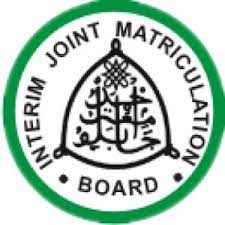Agric Keypoints: Plant Propagation Methods; Plant propagation is the process of reproducing and multiplying plants, either sexually or asexually, to establish new individuals. Each method has its advantages and is used in various scenarios depending on the plant species and the goals of the propagation.
Study other Agric keypoints here for JAMB, WAEC, IJMB
In this note, we will explore the different methods of plant propagation, including sexual and asexual methods, and discuss nursery management techniques for successful plant growth.
Agric Keypoints: Plant Propagation Methods

a. Sexual Propagation
i. Classify Crops Propagated by Sexual Methods:
Numerous crop plants are propagated through sexual methods, where seeds are the primary means of reproduction. Some examples of crops propagated by sexual methods include cereals (e.g., wheat, rice, maize), legumes (e.g., soybean, peas), vegetables (e.g., tomatoes, cucumbers), fruits (e.g., apples, oranges), and ornamental plants (e.g., roses, sunflowers).
ii. Determine Seed Viability and Seed Rate:
Seed viability refers to the proportion of viable seeds in a given batch. Before sowing seeds, it is essential to test their viability to ensure successful germination. One common viability test is the “germination test,” where a sample of seeds is placed under suitable conditions, and the percentage of germinated seeds is calculated.
Seed rate refers to the quantity of seeds sown per unit area. The appropriate seed rate depends on factors such as seed size, germination rate, and planting density required for optimal growth.
iii. Differentiate Between Types of Seed Germination:
There are two main types of seed germination: hypogeal and epigeal.
Hypogeal germination: In this type, the cotyledons (seed leaves) remain below the soil surface during germination, while the epicotyl (embryonic shoot) elongates to lift the plumule above the ground. Examples include beans and groundnuts.
Epigeal germination: Here, the cotyledons emerge above the soil surface during germination, and the plumule becomes the shoot system. Examples include sunflowers and cucumbers.
iv. Examine the Conditions for Seed Germination:
For successful seed germination, specific conditions are essential, including proper temperature, moisture, oxygen, and light (for some species). Each plant species has its specific requirements, and these conditions need to be carefully provided to achieve optimal germination rates.
b. Asexual (Vegetative) Propagation
Asexual propagation involves the reproduction of plants without the use of seeds, using vegetative parts like stems, roots, or leaves. Common methods include cuttings, budding, grafting, and layering.
i. Classify Crops into Different Vegetative Propagation Methods:
Certain crops are better suited for specific vegetative propagation methods. For instance, some fruit trees are commonly propagated by grafting or budding, while herbs like mint can be propagated through cuttings. Other examples include sugarcane (using stem cuttings), potatoes (using tubers), and strawberries (using runners).
c. Nursery and Nursery Management
i. Determine Appropriate Nursery Sites, Types; their Advantages, and Disadvantages:
Choosing an appropriate nursery site is crucial for the successful growth of plants. Factors like sunlight, soil quality, water availability, and protection from strong winds must be considered.
There are different types of nurseries, including open-field nurseries, shade houses, and greenhouses. Open-field nurseries are cost-effective but offer limited control over environmental conditions.
Shade houses provide some environmental control but are not as precise as greenhouses, which offer optimal control over temperature, humidity, and light.
ii. Apply the Techniques of Transplanting Seedlings:
Transplanting seedlings is a critical process in nursery management. It involves carefully removing seedlings from their original containers and planting them in their final growing positions. Transplanting should be done with care to avoid damaging the young plants’ delicate root systems, and it is essential to water the transplanted seedlings adequately to promote their establishment.
Conclusion
Plant propagation methods, whether sexual or asexual, play a significant role in the growth and development of plants. Understanding seed viability, seed germination, and appropriate propagation techniques helps horticulturists, farmers, and gardeners ensure a steady supply of healthy plants for agriculture, landscaping, and conservation purposes.
Additionally, effective nursery management practices contribute to the successful establishment and growth of plants, promoting biodiversity and sustainable agricultural practices.












